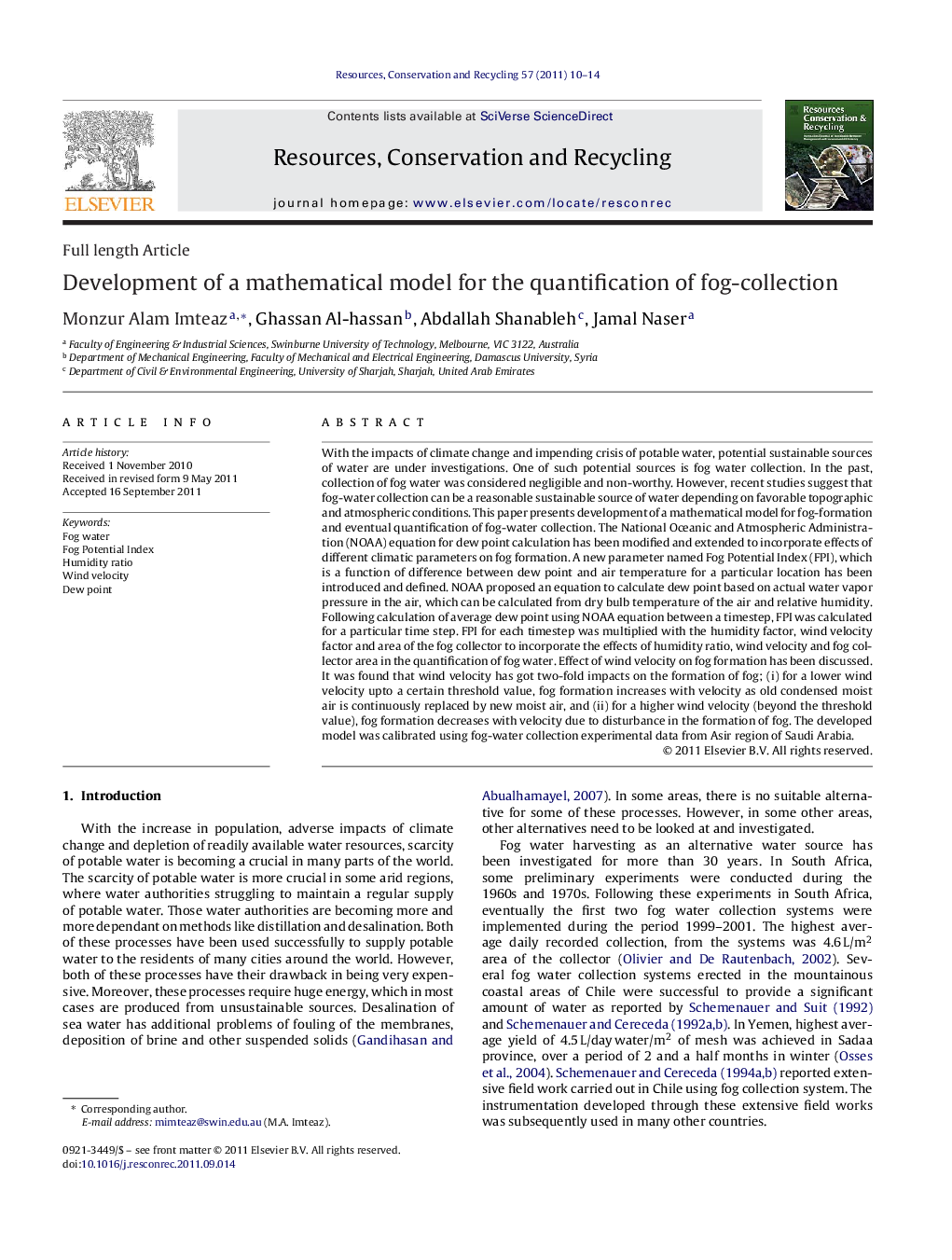| کد مقاله | کد نشریه | سال انتشار | مقاله انگلیسی | نسخه تمام متن |
|---|---|---|---|---|
| 1063369 | 1485732 | 2011 | 5 صفحه PDF | دانلود رایگان |

With the impacts of climate change and impending crisis of potable water, potential sustainable sources of water are under investigations. One of such potential sources is fog water collection. In the past, collection of fog water was considered negligible and non-worthy. However, recent studies suggest that fog-water collection can be a reasonable sustainable source of water depending on favorable topographic and atmospheric conditions. This paper presents development of a mathematical model for fog-formation and eventual quantification of fog-water collection. The National Oceanic and Atmospheric Administration (NOAA) equation for dew point calculation has been modified and extended to incorporate effects of different climatic parameters on fog formation. A new parameter named Fog Potential Index (FPI), which is a function of difference between dew point and air temperature for a particular location has been introduced and defined. NOAA proposed an equation to calculate dew point based on actual water vapor pressure in the air, which can be calculated from dry bulb temperature of the air and relative humidity. Following calculation of average dew point using NOAA equation between a timestep, FPI was calculated for a particular time step. FPI for each timestep was multiplied with the humidity factor, wind velocity factor and area of the fog collector to incorporate the effects of humidity ratio, wind velocity and fog collector area in the quantification of fog water. Effect of wind velocity on fog formation has been discussed. It was found that wind velocity has got two-fold impacts on the formation of fog; (i) for a lower wind velocity upto a certain threshold value, fog formation increases with velocity as old condensed moist air is continuously replaced by new moist air, and (ii) for a higher wind velocity (beyond the threshold value), fog formation decreases with velocity due to disturbance in the formation of fog. The developed model was calibrated using fog-water collection experimental data from Asir region of Saudi Arabia.
► A mathematical model was developed for the quantification of fog-water based on experimental data conducted in Saudi Arabia.
► NOAA equation for dew point calculation was extended to incorporate effects of different climatic parameters on fog formation.
► Model calculates fog-water volume based on air temperature, humidity ratio, wind speed and fog-collector properties.
► Developed model was calibrated with hourly data collected from Al-Asir region of Saudi Arabia.
► Model estimations were very good, having a correlation coefficient of 0.91 with the measured data.
Journal: Resources, Conservation and Recycling - Volume 57, December 2011, Pages 10–14